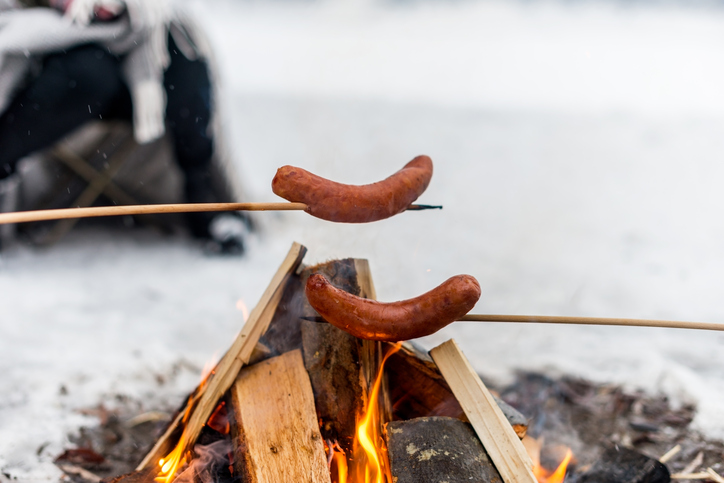
by Grillers Gold | BBQ, BBQ Pellets, Grilling
While America justly claims barbecue as its own today, there’s history to this cooking technique. And it goes way back in time – to the days when cavemen (and women!) discovered the kind of miraculous combination of meat and heat. The idea of roasting food over a fire was embraced by many ancient civilizations around the globe.
First, let’s travel back about 200,000 years.
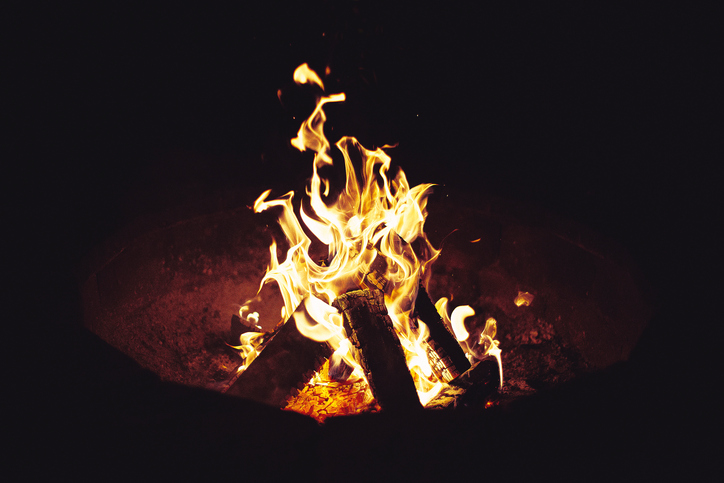
That’s the age of the cooking artifacts found near Carmel by archaeologists at Israel’s University of Haifa. The evidence there tells us that large, meaty hooved animals, such as cattle, deer, and boars, were on the menu. Our ancestors would have probably first just thrown the meat into an open fire, then eventually discovered the effectiveness of green, inflammable wooden skewers to hold the meat over the flame.
Things inevitably got more sophisticated.
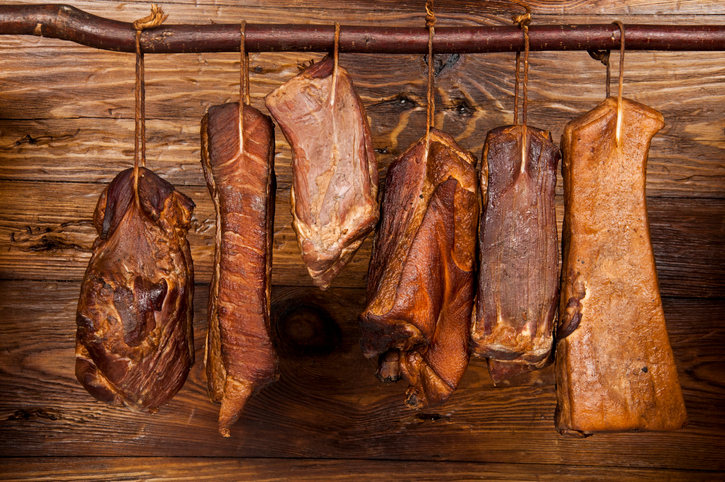
(It’s a long way from a green stick to a wood pellet grill!) Wooden frames held larger pieces meat far enough away from the flame so as not to incinerate dinner and cookware alike; this approach mandated slower cooking times and added the flavor of smoke. With that taste came preservative qualities: smoke reduces the moisture that allows bacteria to grow, so perishable meat could be smoked, dried and salted for future consumption. In ancient China, India, and Japan, smoking food has been popular for thousands of years. Ceramic urns for smoking are called kamados in Japan and tandoors in India.

The use of spits and metal implements in ancient Greece is documented in Homer’s Iliad and The Odyssey. Then there’s the gridiron, the precursor to today’s grill, which was developed early in the Iron Age. Note that the Greeks basted the meat in wine and salt, and feasted outdoors. Sound familiar?
Look in the Hebrew Old Testament books of Exodus and Leviticus for references to burnt offerings of animals. The smoke rose to God, but the meat of the animals was eaten by Moses and company.
Fire plus food – that’s the simple, but absolutely brilliant idea.

No wonder barbecue has endured, and pleased the world’s palates, through the ages. If you’re looking to add even more flavor to your BBQ, check out our bbq series, Sauces of Honor: Chicken and Sauces of Honor: Pork.
Thanks to our source for these historical facts, amazingribs.com. If you want to dig into a great big fun serving of their barbecue scholarship, visit the site and check out the best-selling Meathead: The Science of Great Barbecue and Grilling, authored by website founder Meathead Goldwyn.
Come back to this blog for more history lessons in the months ahead!
BACK TO BLOG

by Grillers Gold | BBQ Pellets, Flavor
If you’re like a whole lot of people, when you’re talking about wood for smoking food, you’re thinking hickory. Griller’s Gold Premium BBQ Pellets are made of only one ingredient: wood. And since hickory is such an important wood for great BBQ, it’s in three of our blends.
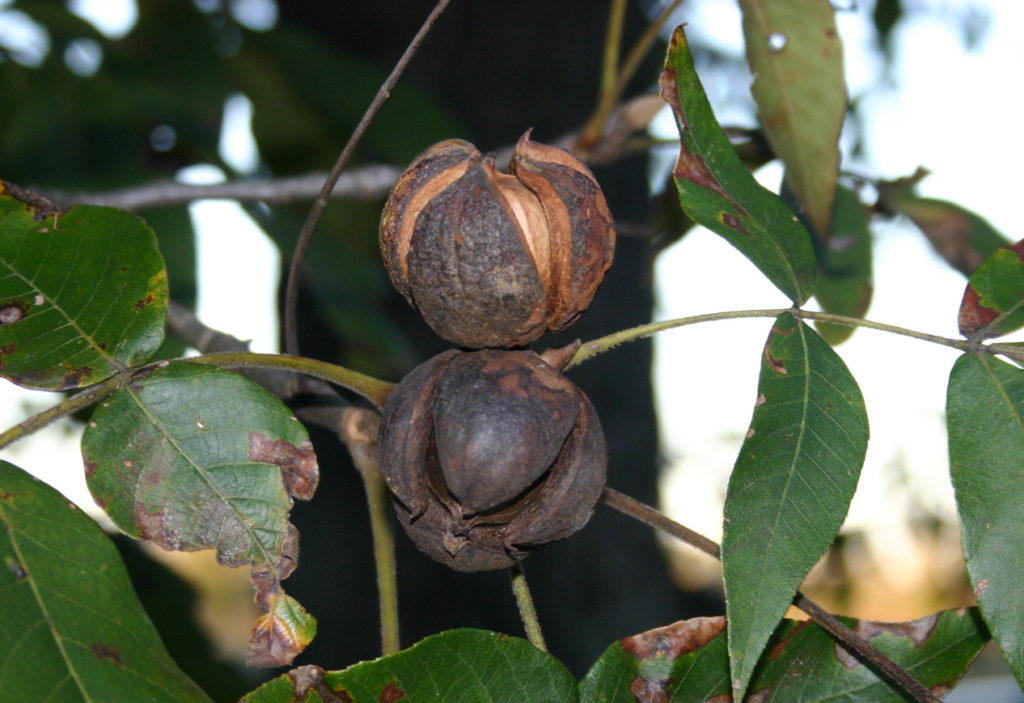
The hickory tree is part of the walnut family.
Hickory nuts are edible, and you can forage for them in autumn; ripe hickory nuts fall to the ground so just pick them up. Eat them raw or roasted, and use them in pies instead of pecans, and in quickbreads and salads.
The United States has the most species of hickory trees
A dozen or so species exist in the United States alone. They tend to thrive in the Southeastern US; our neighbor to the north, Canada, has less than five species.
The average hickory tree will grow to be about 100 feet tall.
Hickory wood is exceptionally hard, dense and strong. Because of its durability and shock resistance, hickory wood is typically used for tool handles. It’s also employed in drumsticks, lacrosse sticks, archery bows, walking sticks, and on the bottom of skis. Historically, hickory was used in early airplane construction. Hickory wood is valued for the character its grain it brings to flooring, furniture, and ornamental woodwork.
A taste of the South
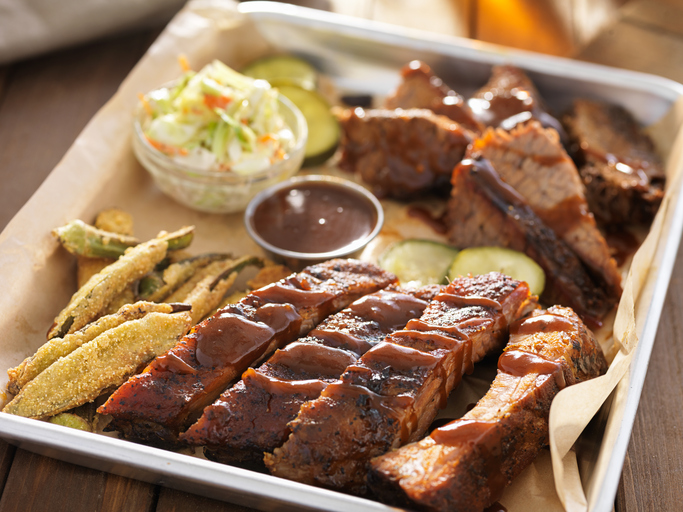
Smoked meat connoisseurs from the Carolinas to Tennessee to Texas talk up their hickory-scented favorite BBQ. Griller’s Gold offers an all-hickory flavor of premium BBQ pellets, and we mix hickory into Competition and Smokeshack blends, as well. For a recipe with seriously smoky attitude, try Hickory Smoked Beef Brisket from the author of The Paleo Kitchen.
Continue reading this series: Getting to our Roots: Maple
BACK TO BLOG
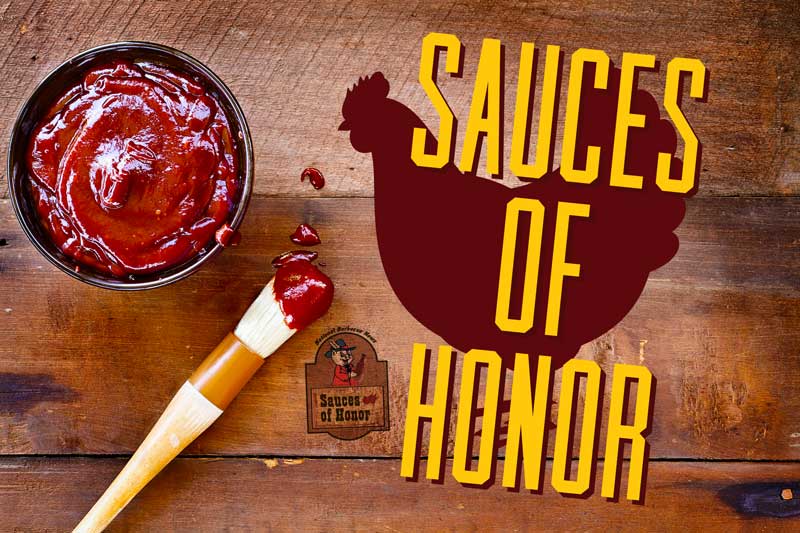
by Grillers Gold | BBQ Pellets, Competition, Flavor
2017 CHAMPION CHICKEN SAUCES: NATIONAL BARBECUE NEWS
In the publication’s 7th year of awarding Sauces of Honor for BBQ excellence from Alabama to Alaska, National Barbecue News recognized these labels as the top 10 sauces for chicken. As always, the competition is open to both commercial producers and enthusiastic amateurs, including caterers, restaurants, competitive teams and farmer’s market vendors. Read about them – and look for these very special sauces when you’re in the winner’s neck of the woods. Save some room for the magazine’s list of winning beef sauces, coming later this grilling season.
AND THE WINNERS ARE…
- Original Sauce –Historic BBQ (Lebanon, Ohio)
- Eroc’s Black Cherry & Mango – Eroc’s at Hawgeyes BBQ (online)
- Burntout BBQ Sweet Mama – Burnt Out BBQ Co. (Castle Rock, Colorado)
- Steele Grillz Sweet Hawaiian – Steele Grillz BBQ Sauce (Anchorage, Alaska)
- Pa Paw’s Medium – Pa Paw’s Killer BBQ Sauce (Lemoore, California)
- Myassis Dragon – 1572 Roadhouse Bar-B-Q (Waynesville, Ohio)
- Skinny’s Original BBQ Sauce – Skinny’s BBQ Team (Buckeye, Arizona)
- Smokehouse Gold – Spices Smokehouse LLC (Boaz, Alabama)
- Veterans Q Original BBQ Sauce – Veterans Q (Hampshire, Illinois)
- In the Rhubarb – Team Turnin-N-Burnin Jeff Deckard (North Pole, Alaska)
Continue reading this series: Sauces of Honor: Pork
BACK TO BLOG

by Grillers Gold | BBQ, BBQ Pellets, Flavor, Grilling
The burger is the American griller’s favorite food choice. Surveys from organizations like National Cattleman’s Beef Association and Hearth, Patio and Barbecue Association say so year after year. How much better can it get for the burger? A few food writers at the Detroit Free Press and Huffington Post shared their tips and perspectives to do better by your burger. Here’s how to upgrade your hamburger grilling game.
Look at all the elements together.
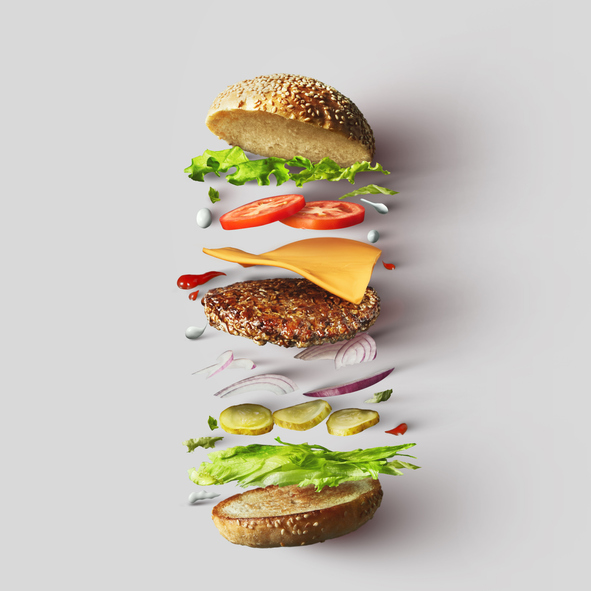
The meat, the condiments, the toppings and the bun. Choose all with equal care. Get creative!
Burger meat needs fat.

Experts generally recommend a mix that’s typical of ground chuck: 80% lean meat and 20% fat. Ground round is a bit leaner, 85% meat to 15% fat. Ground sirloin is usually labeled 90% lean. If you’re cooking with grass-fed beef, check out these helpful tips here.
Season your meat.

Don’t add too much in the way of ingredients, just spices.
Handle the burger as little as possible to avoid making the meat cook up rubbery.

Less is more! Mix the burger meat and seasonings gently, shape patties with a soft touch, and resist the urge to squeeze the juices out with a spatula.
Form the perfect patty
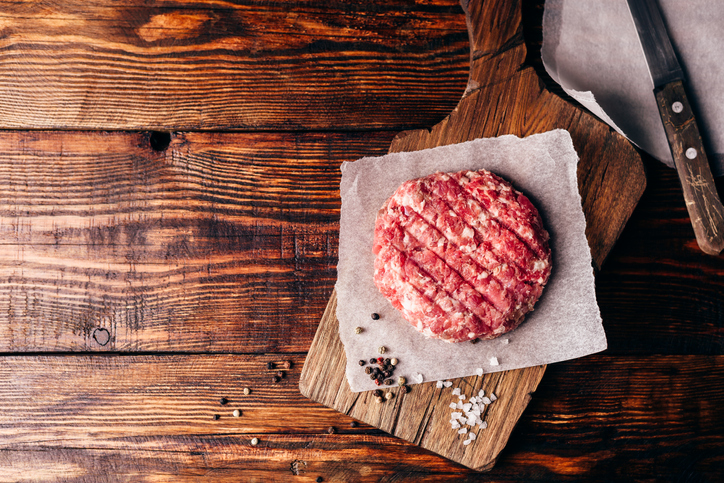
Use about 6 ounces of meat in a patty that is at least ¾” thick and 3-1/2” diameter. Put a little dent in the center of the raw patties with your thumb so the burgers don’t puff up on the grill; it works!
For a great burger using condiments and toppings that come from Greek cuisine, try the Olympian Burger recipe from beefitswhatsfordinner.com
BACK TO BLOG

by Grillers Gold | BBQ, BBQ Pellets
You love to eat BBQ. What do you pair with it? Beer is the beverage of choice for so many grillers. Stock your bar for your next BBQ with these beer-lover finds.
Custom cozies
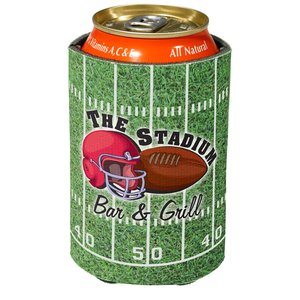
You can call them drink holders or beer cozies or beverage coolers. Whatever the name, these handy little accessories keep things chill by insulating individual cans and bottles. Mark a special occasion and generally impress your guests by personalizing your drink holders. Choose from dozens of options with many under $1.
High-tech tubs

Keep the BBQ going into the night with a seriously cool cooler for your drinks. This illuminated beverage tub is lit by an LED light for your after-sunset drinking pleasure. It holds a 12-pack at a time.
Groovy glasses (made of plastic)

When it comes to outdoor dining, many smart hosts pass on glass. Well-designed plastic beer glasses are just the ticket for your BBQ. The little thumb groove is an ergonomic touch that makes it easy to keep hold of your brew. And they’re reusable.
Smoked beer

You heard that right. Smoked. Beer. If you can’t get enough of good smoked flavor when you’re grilling, then this is the craft brew trend you need to check out. Rauchbiers from Bamberg, Germany are the famous originals; their distinctive smoke flavor comes from using malted barley that’s been dried over an open flame. Today’s craft brewer smoked beers use generally the same process, but their flavor is lighter with a “BBQ sweetness,” according to Josh Cody of Colorado Malting Company.
BACK TO BLOG
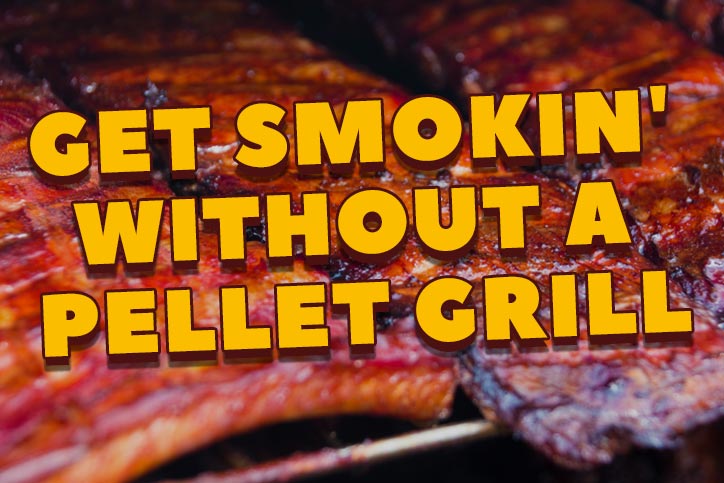
by Grillers Gold | BBQ Pellets, Competition, Flavor, Grilling
If the idea of natural wood flavor and smoky goodness gets your taste buds all excited, but you don’t have the latest and greatest pellet grill gear in your backyard yet, there’s no need to despair. Here’s the good news: you can buy accessories to use wood pellets on the gas or charcoal grill you already own.
These affordable products are generally called ‘smoker boxes’ or ‘smoker tubes.’
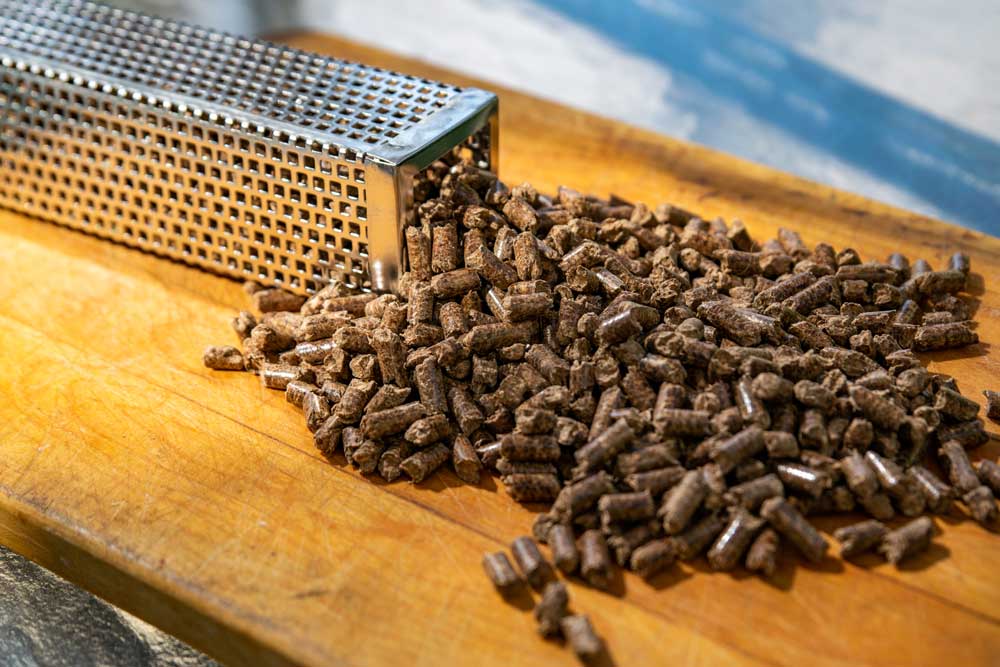
They’re made of metal so they can take the heat. They’re also easy to use! Just fill with a few BBQ pellets, place onto your grill grates, and be amazed at the added flavor your bbq acquires. Because smoker tubes and boxes are simpler devices, they’re not nearly as versatile as a fully engineered, dedicated BBQ pellet machine. But for the same reason, you’ll pay a whole lot less for smoker boxes and tubes.
Ask your local hardware retailer about smoker tubes and boxes or browse Amazon.

The SmokinCube is one great example of the bountiful selection you can find online. These accessories can kick off a long and beautiful relationship with pellet grilling. We hope you enjoy the journey. (We’re pretty sure you will.)
Now that you know how to get great smoky flavors, what are you going to do with them?
BACK TO BLOG






















